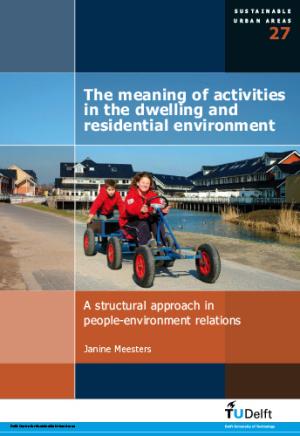Hosted by
The Meaning of Activities in the Dwelling and Residential Environment: A Structural Approach in People-Environment Relations
Synopsis
The dwelling is a central setting in people’s everyday life. People use their dwelling and residential environment for a large variety of activities and purposes. The Meaning of Activities in the Dwelling and Residential Environment systematically relates activities, settings and meanings to improve the insight into people-environment relations which is called a meaning structure approach. Over 600 people, living in either a city centre, suburban or rural type of residential environment were asked about their everyday activities and the meanings thereof. The results show that meanings are important for the way in which people use their dwelling and residential environment.
The meaning structure approach allows for a high level of aggregation identifying general meanings of the dwelling, such as a place to be together with family and friends. It also allows for a low level of aggregation, for example, using internet at home has for many people become part of everyday life, providing them with easy access to a wide range of information. This illustrates the usefulness of meaning structures as a tool for investigating people-environment relations.

